- Tune kpq
- Tune kpd
- Tune kiq
- Tune kiq # typo... expecting to see kid
Why do you feel the need to tune D and Q separately? D-component is non-torque producing current which manifests itself in the ABC reference frame as a phase shift. Why is this important? well it depends on whether you intentionally require D-component or not...
If for instance you wanted field weakening then yes you would want to control the D-component however this isn't the case here as you have a fixed D-current demand of 0, the standard method. In doing so the displacement power factor is minimized.
Why state this... well the four listed steps is implying independent tuning steps for D and Q which opens the possibility of different frequency response between the D control and the Q control. Think for a minute what this will result in? if the D-control had a bandwidth a 10th of the Q-control, there would be a lag in controlling the D-component to zero resulting in unwanted D voltage/current for a longer period of time during and after acceleration resulting in a sluggish performance, inefficiency and possibly stability considerations.
Traditionally the Q and the D share the same control parameters ( note: not always the case as there are benefits in limiting the D-demand).
So if it can be accepted that \$K_{pq} \equiv K_{pd}\$ and \$K_{iq} \equiv K_{id}\$ how to tune? there are a couple of empirical methods (Ziegle-Nichols, Cohen-Coon) and these are useful if you do not know the plant, but you should. in this instance the plant is the line-line resistance and inductance of your machine (at rated current)
The plant transfer function is thus
\$\frac{I(s)}{V(s)} = \frac{1}{Ls + R} \$ which is of the form: \$ \frac{K_{dc}}{\tau s + 1}\$
\$K_{dc} = \frac{1}{R}\$
\$ \tau = \frac{L}{R}\$
Consider the classic close loop block diagram

where in this instance H = -1 and G = P*G (plant time Gain)
The canonical form of a feedback control system is thus: \$ \frac{G}{1+G}\$
A PI controller has a transfer function equal to
\$C(s) = K_p + \frac{K_i}{s} = \frac{K_p\cdot s + K_i}{s}\$
\$P(s) = \frac{K_{dc}}{\tau s + 1}\$
Thus: \$G(s) = C(s)\cdot P(s) = \frac{K_p\cdot s + K_i}{s} \cdot \frac{K_{dc}}{\tau s + 1}\$
The the feedback control system is:
\$\frac{Y(s)}{X(s)} = \frac{G(s)}{1 + G(s)} = \frac{K_{dc}\cdot K_p\cdot s + K_{dc}\cdot K_i}{\tau \cdot s (1+K_{dc}\cdot K_p)\cdot s + K_{dc}\cdot K_i}\$
This can be rearranged into one of the many standard forms:
\$ \frac{ \frac{K_p}{K_i}\cdot s + 1} { \frac{\tau}{K_{dc} \cdot K_i}\cdot s^2
+ \frac{1 + K_{dc}\cdot K_p}{K_{dc}\cdot K_i} \cdot s + 1} \$
With a desired damping factor and a target resonance frequency, Ki and Kp can be determined to match your known plant.

